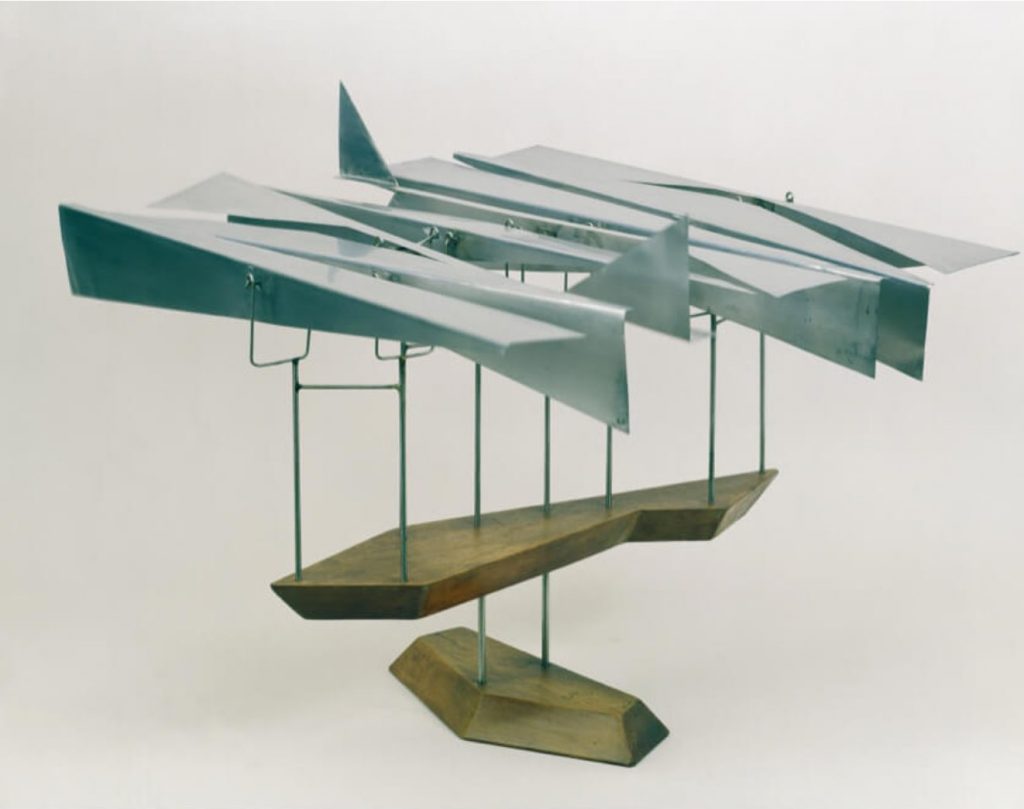https://www.georgerickey.org/themes/movement
George Ricky is an American artist who since the 1920s has worked as a painter, muralist, and sculptor. He worked on a diverse range of styles from paintings to sculptures. Across all his disciplines, he focused on 4 major themes: Movement, Color, Relationships, and Scale. The one I will be focusing on is Movement.

The unique thing about Ricky’s moving sculptures is that they used no motorization. He focused on using kinetic elements in nature such as wind and weight in order to put things in motion. His pieces operated on a basic system of multiple levers with individual fulcrums suspended on a superstructure. He first focused on using balance by creating a weight and counterweight in order to mimic movement in the specific way he wanted.
After experimenting with hanging sculptures, he moved on to bigger standing pieces. He still experiment with the same principles of balance and motion but this time using more complicated structures such as knife edges and ball bearings. This allowed for increased range of motion and more complicated movement.
Transferable features
I think the concept of using mechanical structures and natural physic laws to dictate motion could evolve into a technique for kinetic art. Although motorized elements allow for more possibilities, there is a sense of simplistic beauty in mechanics.
Not immediately apparent
I think something that is not immediately apparent is that each piece of the structure is placed and weighed so that it is the exact weight necessary to balance or off-balance the other pieces.
Related works
Artist Alexander Calder created similar sculptures in which the weight of individual pieces were used to balance each element.
Leave a Reply
You must be logged in to post a comment.